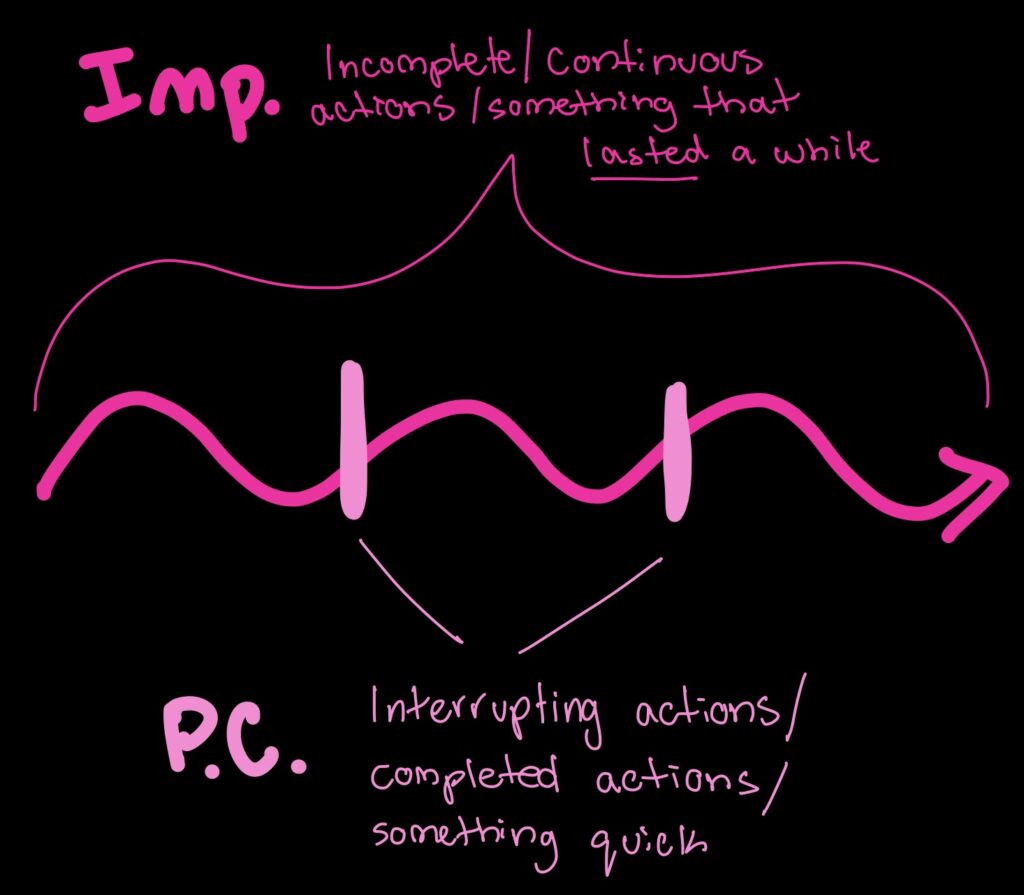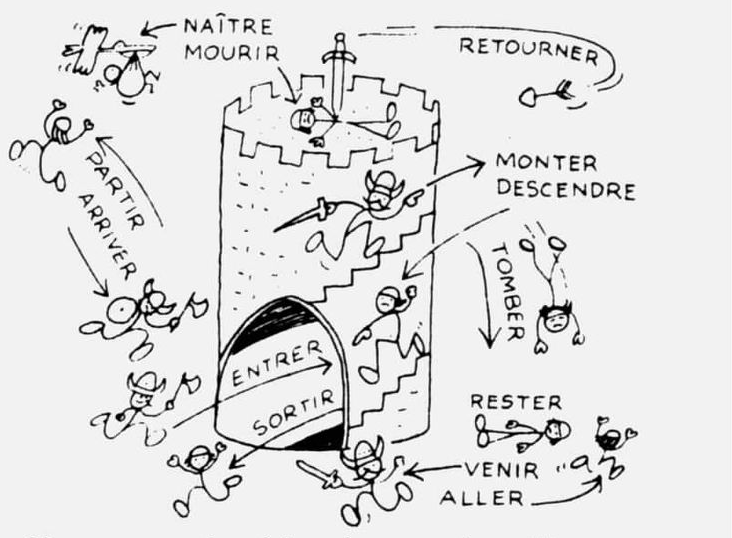During this week’s discussion regarding the use of multimedia to facilitate learning, the importance of using visual supports in our teaching was stressed. According to the dual-code theory of learning, information can be encoded into memory better when stimuli is received both auditorily and visually. This is why the use of images and videos is an indispensable tool for teachers since traditional lecture-style teaching may not be sufficient in itself.
With regards to my teaching area, I immediately thought back to my own experience and recalled several images which helped me grasp French concepts a thousand times better than when the teacher first explained them to me using verbal instructions/explanations.
The first concept which was explained to me using an image was the use of past tense verbs, specifically the differentiation between passé composé (PC) and imparfait. Once the teacher drew the following image (which I recreated below) I was able to remember perfectly which instances called for PC and which called for imparfait.

Another concept which may still haunt anyone who took French class is the special case DR MRS VANDERTRAMP verbs which are conjugated differently. DR MRS VANDERTRAMP is an acronym to help students remember what verbs they are (Descendre, Rentrer, Monter, Rester, Sortir, Venir, Arriver, Naître, Devenir, Entrer, Retourner, Tomber, Revenir, Aller, Mourir, & Partir)… and although this acronym may work well on its own for some students, what worked best for me as a memorization technique was using the “maison d’être.” The “maison d’être” is a visual representation of all these verbs (as shown below). A teacher could either show a pre-created image to the students which was sourced online, or get them to create their own version (which is what I had to do). Like we discussed in our psychology class, getting students to create something new using the knowledge they’ve just acquired works exceptionally well so that should be the aim.

Image from: https://lecoursdefrancais.weebly.com/le-passeacute-composeacute-ecirctre.html
In addition to the use of images to aid learning, videos are also valuable. As with pictures, they can be helpful when sourced online, created by the teacher, or when students are asked to create video content themselves. Again I am a big advocate for video projects (see my weekly reflection #3 for a video I made in high school). Video recordings can be especially useful in French class because of the emphasis on oral production. They permit shy students to showcase their learning and skills without having to stand up and speak in front of the class (a nerve-racking experience even in one’s first language).
Using the DR MRS VANDERTRAMP example once more, here is an awesome example of a video that a teacher could show in class to stimulate student learning: https://www.youtube.com/watch?v=6mxQbMyXkpo
And here is an example of a hilarious student project which showcases their learning: https://www.youtube.com/watch?v=QiLA-Igt1xg
In summation, this week’s topic (and the Bernie Sanders meme edit) inspired me so much that I went out and recreated the header image for this website. I took a photo of my laptop, erased the background in an app called “Background Eraser: superimpose,” exported the image as a PNG file, pasted it in the app “Goodnotes 6,” and finally drew the rest of the details myself. Thanks for the inspiration, now my website looks way better!
Sorry, but comments are not enabled on this site.